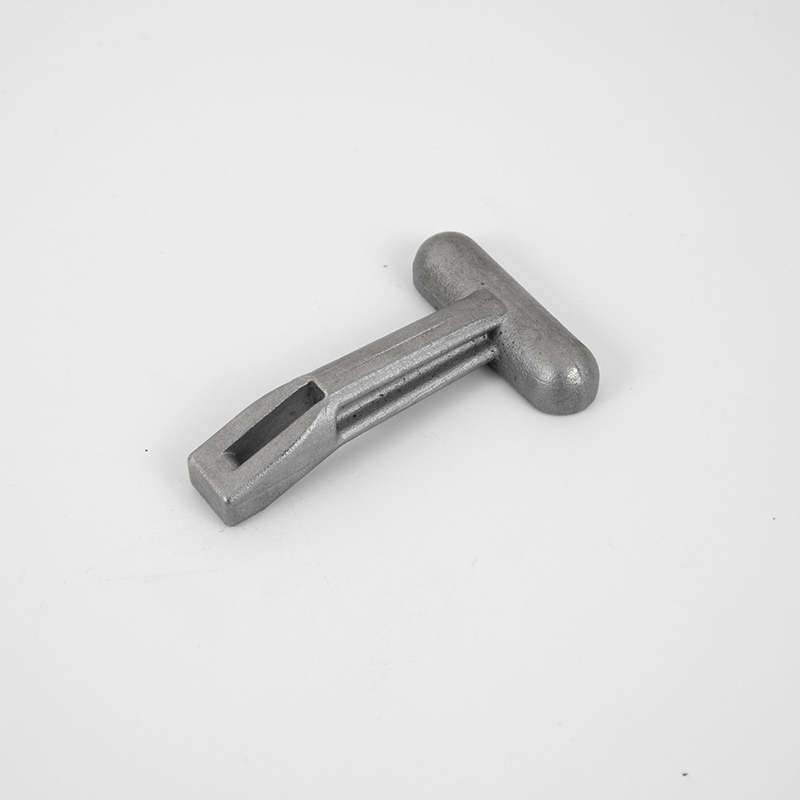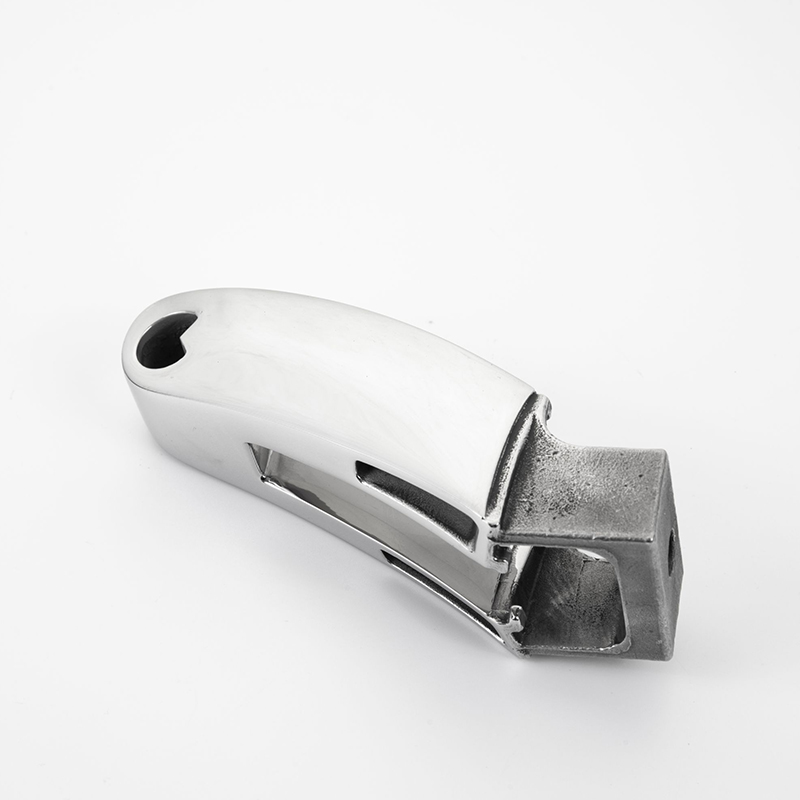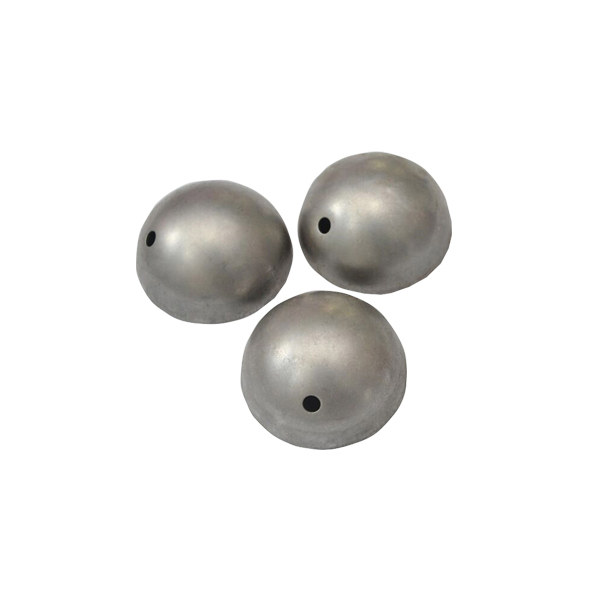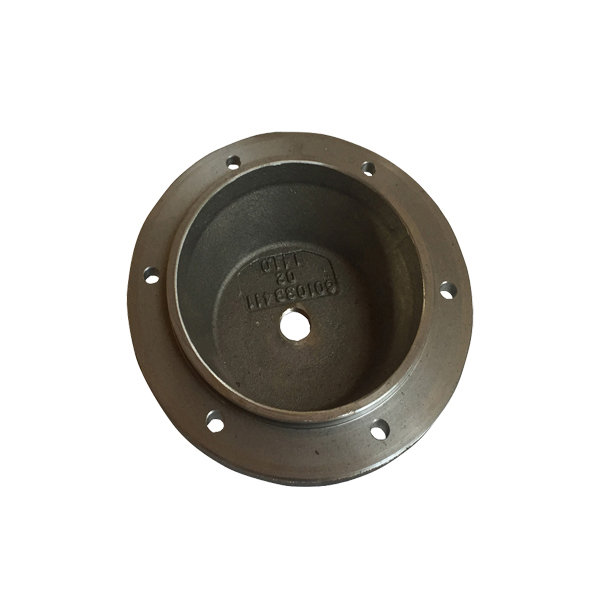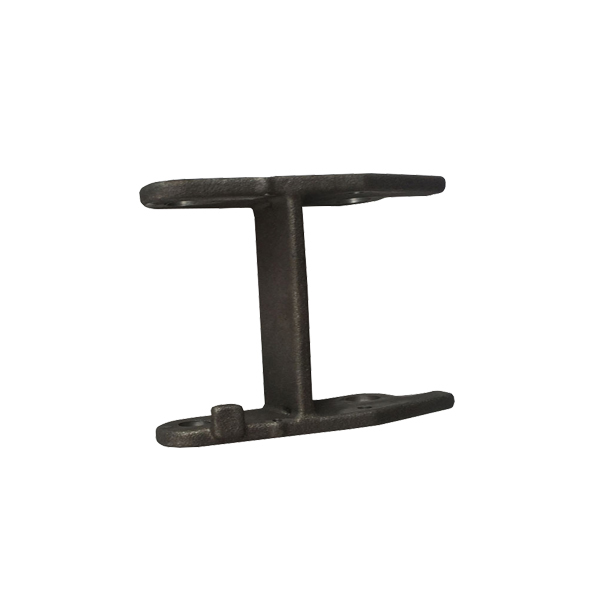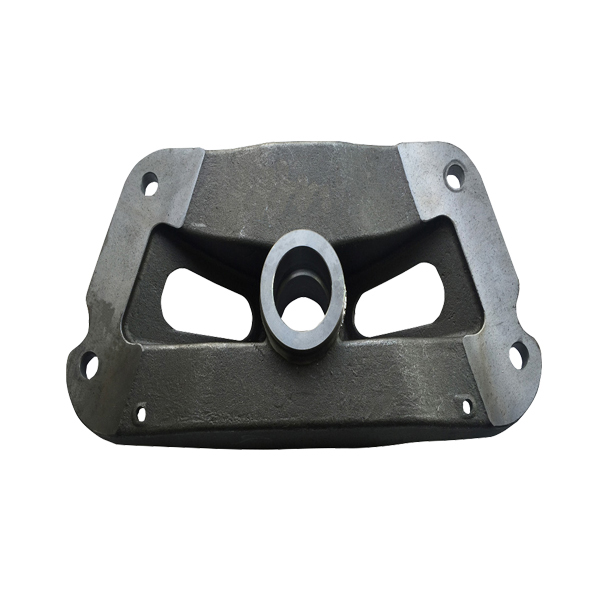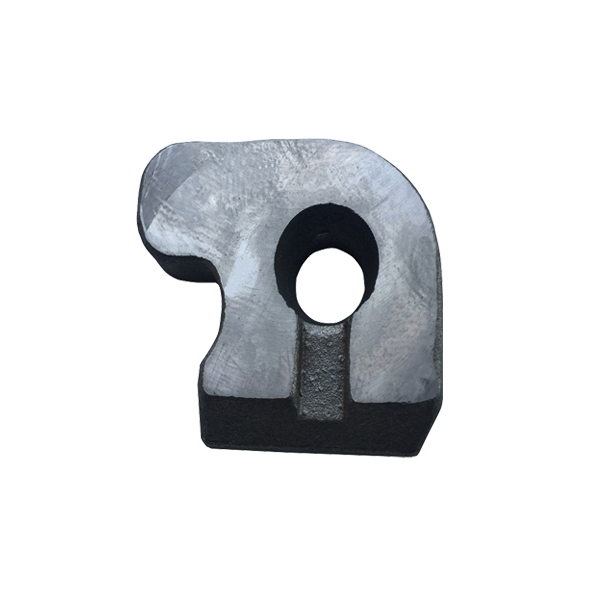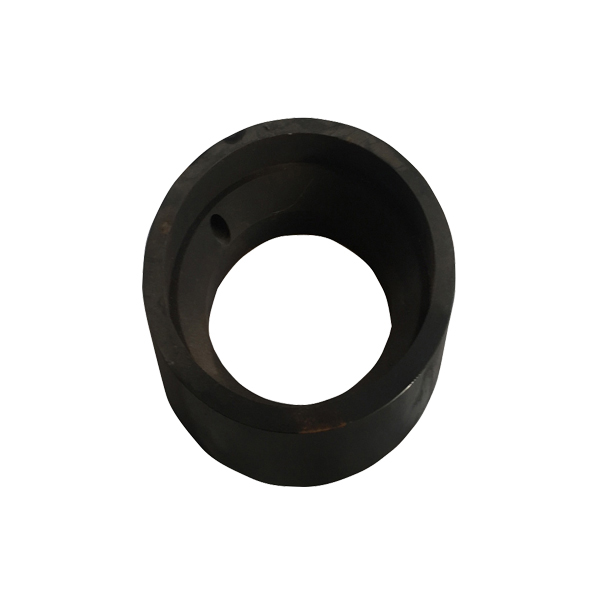Products
Stainless Steel Investment Casting
The following is the introduction of high quality Stainless Steel Investment Casting, hoping to help you better understand Stainless Steel Investment Casting. Welcome new and old customers to continue to cooperate with us to create a better future! Stainless steel investment casting, also known as lost wax casting, is a process that involves creating a wax pattern and then coating it with a ceramic material. The ceramic shell is then heated to remove the wax and create a hollow mold into which molten stainless steel is poured, filling the entire cavity.
Send Inquiry
Product Description
What is Stainless Steel Investment Casting?
Stainless steel investment casting, also known as lost wax casting, is a technique used to create metal parts that involve creating a wax pattern of the final product, coating it with a ceramic material, and then melting the wax out of the mold. This creates a hollow cavity that is then filled with molten stainless steel. After the metal cools and solidifies, the ceramic shell is removed, leaving behind a high-quality, precise and detailed stainless steel part that matches the original wax pattern.
Stainless steel investment casting is often used in industries such as aerospace, automotive, and medical device manufacturing, where high-quality, precision parts are required. The process allows for the production of complex shapes with tight tolerances and excellent surface finishes, while still ensuring the parts maintain the durability and corrosion resistance of stainless steel.
Stainless steel investment casting is often used in industries such as aerospace, automotive, and medical device manufacturing, where high-quality, precision parts are required. The process allows for the production of complex shapes with tight tolerances and excellent surface finishes, while still ensuring the parts maintain the durability and corrosion resistance of stainless steel.
Why is it Called Stainless Steel Investment Casting?
The term "investment casting" refers to the fact that the process involves investing or surrounding a wax pattern with a ceramic shell before casting. This ceramic investment is created by repeatedly dipping the wax pattern into a liquid ceramic slurry, and then coating it with a fine sand or ceramic powder. After the ceramic dries and hardens, it forms a shell around the wax pattern.
The term "stainless steel" is added to indicate the type of metal being used in this casting process. Stainless steel is a highly corrosion-resistant and durable alloy that is known for its strength and ability to withstand harsh environments. It is commonly used in many industries that require high-performance metal parts.
So, "Stainless Steel Investment Casting" is a process used to create complex shapes and precise metal parts by filling a hollow mold with molten stainless steel, which has been formed around a wax pattern and surrounded by a ceramic shell.
The term "stainless steel" is added to indicate the type of metal being used in this casting process. Stainless steel is a highly corrosion-resistant and durable alloy that is known for its strength and ability to withstand harsh environments. It is commonly used in many industries that require high-performance metal parts.
So, "Stainless Steel Investment Casting" is a process used to create complex shapes and precise metal parts by filling a hollow mold with molten stainless steel, which has been formed around a wax pattern and surrounded by a ceramic shell.
What is the Stainless Steel Investment Casting Process?
The stainless steel investment casting process generally consists of these main steps:
Wax Pattern Creation: The process starts by creating a wax pattern of the desired part that is to be cast. This pattern is made using wax injection molding machines or hand-carved by artisan pattern makers.
Assembly: Several wax patterns are then assembled onto a central wax sprue, a gating system, and usually dipped into a ceramic slurry, a fine grained refractory material in a process called slurry coating. This process will create a hard physically robust ceramic shell as the base material to receive the molten metal.
De-Waxing: The ceramic shell with the wax assembly is then pulled out and allowed to dry and this is repeated layer upon layer until the ceramic shell is robust enough to withstand its own weight and the stress of the molten metal. The next step is to flash fire or burn out the wax pattern inside the ceramic shell in an autoclave leaving a cavity where the wax pattern once existed – this is why it is referred to as the “Lost Wax” process.
Casting: The ceramic shell is preheated to the appropriate temperature, and then generally poured with molten stainless steel alloy or other molten metals. This correctly filling the ceramic shell ensures that the cast part precisely replicates the original wax pattern that is just burnt out.
Cooling and Breaking Out: After casting, the ceramic shell is allowed to cool down and harden. Once cooled, the metal part is then removed from the ceramic shell through breaking.
Finishing: Finally, the cast part may require additional finishing work, including grinding, polishing, heat treatment or machining, to achieve the required dimensional accuracy, surface finish and strength.
Overall, the stainless steel investment casting process allows for the production of highly complex metal parts that are precise, durable, and can withstand harsh environments.
Wax Pattern Creation: The process starts by creating a wax pattern of the desired part that is to be cast. This pattern is made using wax injection molding machines or hand-carved by artisan pattern makers.
Assembly: Several wax patterns are then assembled onto a central wax sprue, a gating system, and usually dipped into a ceramic slurry, a fine grained refractory material in a process called slurry coating. This process will create a hard physically robust ceramic shell as the base material to receive the molten metal.
De-Waxing: The ceramic shell with the wax assembly is then pulled out and allowed to dry and this is repeated layer upon layer until the ceramic shell is robust enough to withstand its own weight and the stress of the molten metal. The next step is to flash fire or burn out the wax pattern inside the ceramic shell in an autoclave leaving a cavity where the wax pattern once existed – this is why it is referred to as the “Lost Wax” process.
Casting: The ceramic shell is preheated to the appropriate temperature, and then generally poured with molten stainless steel alloy or other molten metals. This correctly filling the ceramic shell ensures that the cast part precisely replicates the original wax pattern that is just burnt out.
Cooling and Breaking Out: After casting, the ceramic shell is allowed to cool down and harden. Once cooled, the metal part is then removed from the ceramic shell through breaking.
Finishing: Finally, the cast part may require additional finishing work, including grinding, polishing, heat treatment or machining, to achieve the required dimensional accuracy, surface finish and strength.
Overall, the stainless steel investment casting process allows for the production of highly complex metal parts that are precise, durable, and can withstand harsh environments.
What Materials can be Stainless Steel Investment Casting?
A wide range of materials can be used in stainless steel investment casting. The choice of material depends on the specific application and the properties that are required of the final part. Some common materials that can be used in stainless steel investment casting include:
Stainless Steel Alloys: 300 series and 400 series stainless steel alloys, are commonly used in investment casting for their exceptional corrosion resistance, high strength, and durability. The most common types include 304, 316, and 17-4 PH stainless steel alloys.
Low Alloy Steels: Investment casting can also be used to produce low alloy steels, such as carbon steel, tool steel, and alloy steel. Low alloy steels offer good strength, toughness, and wear resistance.
Non-Ferrous Metals: Investment casting can also be used to produce non-ferrous metals such as aluminum, copper, and titanium. These metals are lightweight, corrosion-resistant, and have good thermal and electrical conductivity.
Nickel-based Alloys: Nickel-based alloys are often used in high-temperature applications where excellent resistance to corrosion and heat is required.
In summary, almost any metal that can be melted and controlled to flow into the mold can be used as a feedstock for investment casting.
Stainless Steel Alloys: 300 series and 400 series stainless steel alloys, are commonly used in investment casting for their exceptional corrosion resistance, high strength, and durability. The most common types include 304, 316, and 17-4 PH stainless steel alloys.
Low Alloy Steels: Investment casting can also be used to produce low alloy steels, such as carbon steel, tool steel, and alloy steel. Low alloy steels offer good strength, toughness, and wear resistance.
Non-Ferrous Metals: Investment casting can also be used to produce non-ferrous metals such as aluminum, copper, and titanium. These metals are lightweight, corrosion-resistant, and have good thermal and electrical conductivity.
Nickel-based Alloys: Nickel-based alloys are often used in high-temperature applications where excellent resistance to corrosion and heat is required.
In summary, almost any metal that can be melted and controlled to flow into the mold can be used as a feedstock for investment casting.
What is Stainless Steel Investment Casting Used For?
Stainless steel investment casting is used for producing high-quality, intricate, and complex metal parts with excellent dimensional accuracy and surface finish. This casting process is highly versatile, which makes it ideal for several industries, including:
Aerospace: Stainless Steel Investment Casting is widely used in aerospace for producing critical components such as turbine blades, engine parts, and structural brackets, among others.
Automotive: The automotive industry uses investment casting to produce engine parts, gearboxes, chassis components, and other complex components.
Medical: Investment casting is used extensively in the medical industry to produce medical devices, implants, surgical instruments, and other critical components that require excellent surface finishes, tight tolerances, and bio-compatibility.
Industrial: Investment casting is used in various industrial sectors to produce parts like pumps, valves, gears, and metal components for marine and oil & gas applications that require high strength, corrosion-resistance, and durability.
Defense: Stainless Steel Investment Casting can be used to manufacture parts and components for defense industries, including missile systems, weapons, and military vehicles, among others.
Overall, stainless steel investment casting is a highly reliable and versatile metal casting process that helps produce parts with complex designs, tight tolerances, and excellent mechanical properties suitable for a wide range of applications.
Aerospace: Stainless Steel Investment Casting is widely used in aerospace for producing critical components such as turbine blades, engine parts, and structural brackets, among others.
Automotive: The automotive industry uses investment casting to produce engine parts, gearboxes, chassis components, and other complex components.
Medical: Investment casting is used extensively in the medical industry to produce medical devices, implants, surgical instruments, and other critical components that require excellent surface finishes, tight tolerances, and bio-compatibility.
Industrial: Investment casting is used in various industrial sectors to produce parts like pumps, valves, gears, and metal components for marine and oil & gas applications that require high strength, corrosion-resistance, and durability.
Defense: Stainless Steel Investment Casting can be used to manufacture parts and components for defense industries, including missile systems, weapons, and military vehicles, among others.
Overall, stainless steel investment casting is a highly reliable and versatile metal casting process that helps produce parts with complex designs, tight tolerances, and excellent mechanical properties suitable for a wide range of applications.
What are the benefits of Stainless Steel Investment Casting?
Stainless steel investment casting offers several benefits that make it a preferred manufacturing process for various industries. Here are some of the primary benefits:
High Precision: Investment casting allows for the production of highly precise and complex parts with tight tolerances, intricate details, and excellent surface finish.
Versatility: This casting process can be used to produce a wide range of metal parts in various materials, shapes, and sizes, making it a versatile manufacturing process.
Strength and Durability: Stainless steel investment casting produces parts that are highly durable, with excellent corrosion resistance and mechanical strength, making them suitable for harsh environments and high-stress applications.
Cost Savings: Investment casting reduces material waste, which translates into cost savings. The ability to produce complex parts in one piece also reduces the need for secondary operations, which lowers production costs.
Reduced Lead Times: Investment casting reduces lead times compared to other manufacturing processes because the parts are produced directly from the wax pattern, reducing the need for complex tooling.
Design Flexibility: Investment casting allows for the production of parts with complex geometries with thin walls, which cannot be achieved through other manufacturing processes.
Overall, stainless steel investment casting offers numerous benefits that make it an ideal choice for parts that require high precision, complex shapes, strength, and durability.
High Precision: Investment casting allows for the production of highly precise and complex parts with tight tolerances, intricate details, and excellent surface finish.
Versatility: This casting process can be used to produce a wide range of metal parts in various materials, shapes, and sizes, making it a versatile manufacturing process.
Strength and Durability: Stainless steel investment casting produces parts that are highly durable, with excellent corrosion resistance and mechanical strength, making them suitable for harsh environments and high-stress applications.
Cost Savings: Investment casting reduces material waste, which translates into cost savings. The ability to produce complex parts in one piece also reduces the need for secondary operations, which lowers production costs.
Reduced Lead Times: Investment casting reduces lead times compared to other manufacturing processes because the parts are produced directly from the wax pattern, reducing the need for complex tooling.
Design Flexibility: Investment casting allows for the production of parts with complex geometries with thin walls, which cannot be achieved through other manufacturing processes.
Overall, stainless steel investment casting offers numerous benefits that make it an ideal choice for parts that require high precision, complex shapes, strength, and durability.
Product details
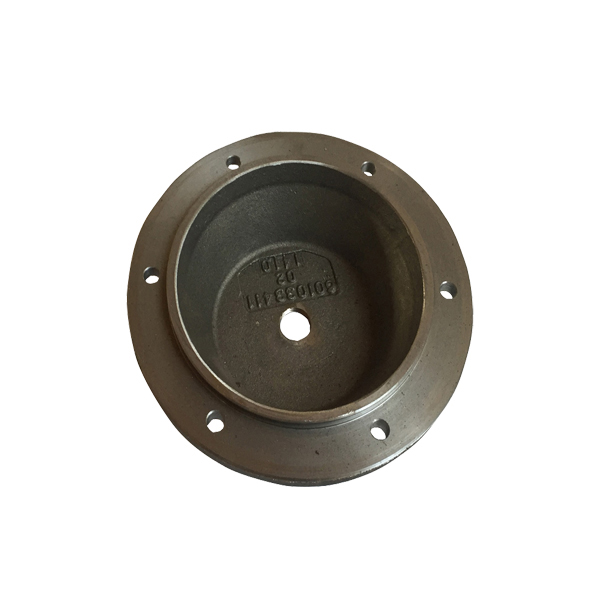
Hot Tags: Stainless Steel Investment Casting, China, Manufacturer, Supplier, Factory, Customized, Made in China
Related Category
Investment Casting
Shell Mold Sand Casting
Lost Foam Casting
Water Glass Casting
Lost Wax Casting
Die Casting
Precision Machining
CNC Machining
Turning Machining
Machining Workshop
Send Inquiry
Please Feel free to give your inquiry in the form below. We will reply you in 24 hours.
